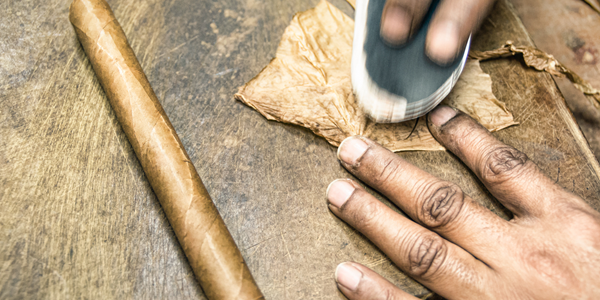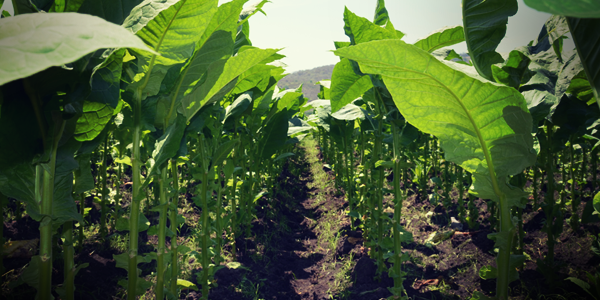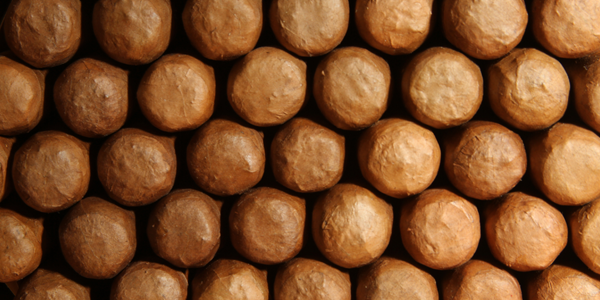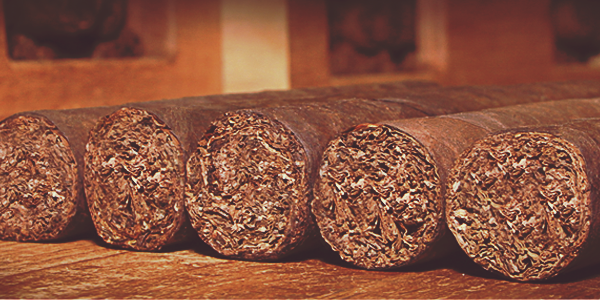How Cigars Are Rolled
We cigar lovers are a curious lot. We don’t simply want to enjoy our smokes, we seem increasingly to want to know exactly how they’re made and what tobacco is in them. The latter is important in guiding your selection. If one cigar has a majority of olor leaf, and you like it, you’ll seek out other cigars with the same leaf. The same applies to how cigars are rolled. Rolling cigars is a highly skilled endeavor. You’re not likely to roll your own cigar anytime soon, though learning how to roll a cigar can help you appreciate the art. There are hundreds of steps that go into making a premium, handmade cigar. Let’s focus on what you need to know about cigar rolling.
The Cigar Rolling Process
1. The Cigar Roller
First, understand that the roller – torcedor in Spanish – is part of a team. The roller is the one who finishes the cigar by applying the leaf, though in some operations the roller also handles the task of the buncher – or bonchero. The buncher has the responsibility of wrapping the filler leaves in the binder and then placing that unfinished tube into a mold and/or press. The best rollers are easy to recognize as they traditionally sit in the front in any rolling room.
2. The Buncher
The buncher’s skills are focused on taking the long filler, usually three or four leaves, and folding or breaking or cutting the leaves to make them the appropriate length for the cigar being made. The buncher is the one who makes sure the leaves are packed together in a way that allows the air to flow well through the cylinder. The bunched tubes are then set in a wooden mold for about an hour, sometimes being turned 180 degrees after 30 minutes.
3. Testing the Draw of the Cigar
The next step in many modern factories is to test the draw – the air flow – in the unwrapped cigars. Many use a machine called the Drawmaster. This machine mimics a cigar smoker and sucks air through the cigar being tested, then registers the draw score to see if it is in the prescribed range. Some factories, the ones that have very experienced bunchers and rollers, don’t bother with the Drawmaster.
4. Applying the Wrapper Leaf
Now it’s time for the wrapper to be rolled onto the binder that surrounds the filler. Well before the wrapper leaves are rolled, they are deveined and selected according to color, suppleness, and elasticity. The wrappers are moistened to keep them that way before being placed on the rolling tables. The bunched cigars are taken to the tables and the torcedor begins to work his or her magic.
Each roller has a chaveta, a knife with a broad curved blade that is extraordinarily sharp so it won’t pull at the leaves. If there’s a renegade vein on the wrapper leaf, the roller cuts it quickly with the chaveta. The wrapper leaves are then cut to fit the specific size of the cigar being rolled, usually in a curve so that it will spiral over the surface of the binder perfectly, beginning at the foot (the end you light) of the cigar and turning and lightly stretching the leaf at the same time. Occasionally, a little plant-based glue is applied in spots to make sure the wrapper holds. It’s not a fluid motion. There’s a bit of roll, stretch, roll, stretch involved. The best finish a cigar in about 30 seconds.
5. Adding the Cap
Now comes the final step, applying the cap at the head (the end you put in your mouth). This is a small piece of wrapper that covers the head of the cigar. It has to match the rest of the wrapper. The Cuban method is to use a ‘triple cap.’ The first part is small, round piece of the wrapper leaf. The next piece is punched out of the wrapper with a tool called a ‘punch cutter’ that does what it sounds like. It punches a dot out of the wrapper. This is attached using a little of the glue. The third piece is a thin strip from the wrapper, wrapped around the ‘shoulder’ of the cigar – the point where the cap and body of the cigar meet. This helps support the cap and the best can’t even be detected. This is known as a ‘mounted head’ and is a method used among many high-quality cigar makers. More commonly, the cap is simply a circular piece of the wrapper that is applied to the head. Other types are ‘pigtail caps’ that squiggle off the head of a cigar; and the ‘flag cap,’ a thin strip of leaf that comes out of the head. The key to all of them is that they withstand your cutting the cigar in a manner that doesn’t fray or come off the cigar.
6. Inspecting the Finished Cigars
A friend recently asked me why some cigars are sold as seconds for a very reasonable price. The answer to that is in the inspection process that examines the color of the cigar wrappers, even those that have a good draw. If the desired wrapper is too dark, too light or too rough, that particular cigar is often put in a different pile. The inspectors also look for spots and other blemishes. For a cigar to qualify to go into a box of premium cigars, it has to be perfect, just the right color and the same as the others in the box.
7. Aging the Cigars
After the cap is applied, the rolled cigars are taken to an aging room and there they rest for at least 21 days. This encourages the various tobaccos to ‘marry,’ or blend. This results in a roundness or balance. Many cigars age for six months or more before being sent to market.
8. Packaging the Cigars
After aging, the cigars are inspected again and sorted into groups of 25 (or whatever number is going into a box). The inspectors are looking again for differences in color and any visible flaws like cracks or spots on the wrappers. If the cigar passes muster, into the box (usually lined with cedar) it goes. You are the last judge of the cigar’s quality.






